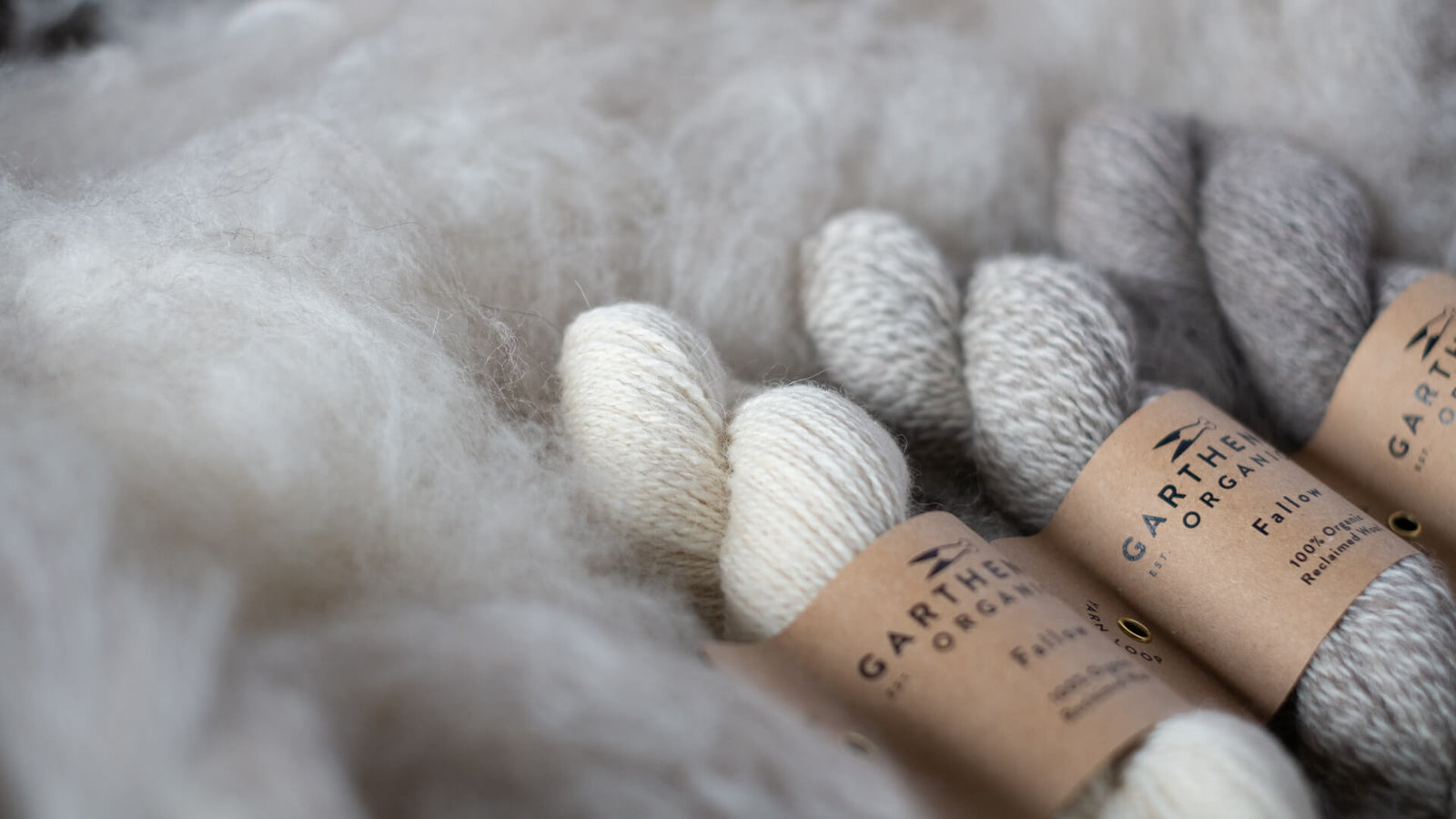Your Cart is Empty
US Shipping is now live again!

Inside the beginnings of something quietly special.
Not every yarn starts with a clean line on a clipboard. Some begin with the bits in between, the first drift of fibre through the rollers, the quiet clatter of a test run, the ends of a good batch coming to rest.
We didn’t set out to make a new yarn.
We just didn’t throw this one away.
Every time we set up a machine in the mill - the gillboxes, the comb, or the spinning frame - there’s a little bit of fibre that comes through first. It’s not quite to spec. Sometimes it surges through with a bit too much enthusiasm, or needs a few tries to find its rhythm. Most of it finds its way back into the batch it came from. But not always.
Some of it gets caught in a special trolley we’ve marked Fallow.
Florence, our spinning frame, is especially good at this. She has a system called Pneumafil, which gently pulls sliver away when it isn’t being spun, whether we’re threading up or if there’s a breakage. It stops fibre flying all over the place. And in doing so, it gathers something quite precious: top grade wool that just didn’t get its moment.
Grams here and there. A puff of fibre, a strand or two. But over time, it builds. And when it’s ready - and not before - we spin.
We’re a zero waste mill. Always have been.
The noil from combing goes into bags for toy stuffing. The short ends of yarn? We wind them into mini skeins or use them to tie parcels. Even the snipped ends from skein tying are collected and composted on the farm. Nothing wasted. Everything accounted for.
So when it came to the fibre we gather during setup, there was never really a question. Of course we’d keep it. There’s nothing wrong with it — it just hadn’t yet become what it was meant to be.
We couldn’t tell you how much of this fibre we collect in a week, or a month. It depends on the rhythm of the mill. The first time we spin a new yarn, there’s always a little more. After that, a little less. It changes with the days and the weather, with the batches that come through, with how Florence is feeling.
But eventually, quietly, we have enough.
Enough to gill it multiple times to get a beautifully even blend.
Enough to spin it, twist it, and wind it with the same care we give everything else.
Enough to say: this is good. Let’s make something from it.
This fibre - the bits we save, the wool we don’t throw away - is the beginning of a new yarn we’re calling Fallow.
We’re almost ready to launch it, but not quite. But we’re learning what it means. And we think it matters.
In farming, a fallow field is one that’s left to rest. Not because it’s empty, but because it’s part of the cycle. We like that. It mirrors what happens here in the mill. The pauses between planned production. The space between intentions.
Fallow is a yarn made from what we keep, not what we waste.
And somehow, that makes it feel all the more valuable.
Julie T
August 01, 2025
This is awesome! Thank you so much for taking the extra effort to do this, to be zero waste. After learning more about the yarn making process and how much waste there is I have determined to search out places that produce what I call “eco-friendly” yarn and to purchase from those places rather than the big brand names. I can’t wait to see what you have made.